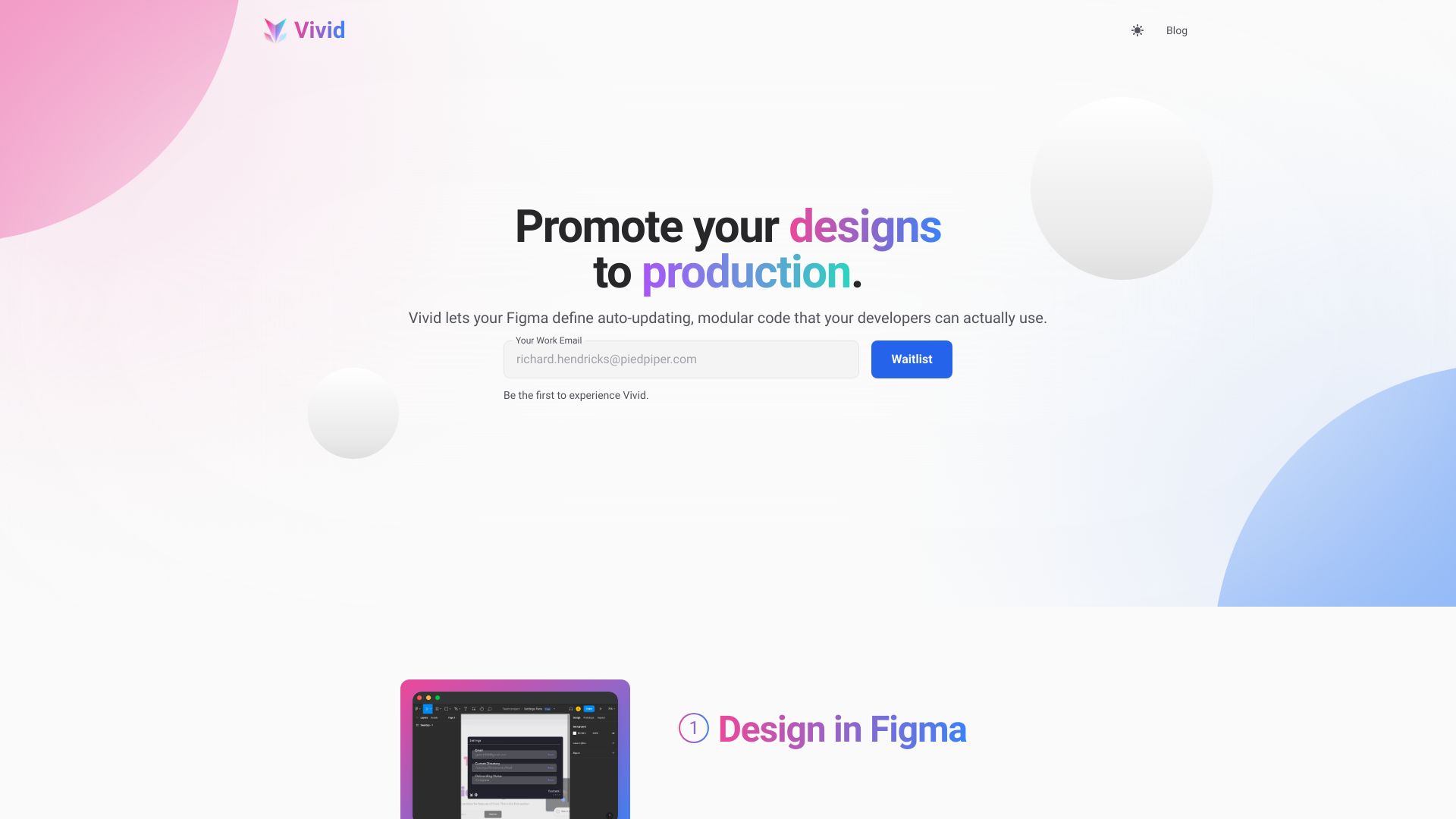
Vivid
Using Vivid, designers can create interactive prototypes with real data and hand off these designs directly to developers in a format that can easily be translated into code. This helps reduce the need for developers to recreate the designs from scratch, saving time and ensuring that the final product matches the initial vision. Vivid also allows for easy collaboration between designers and developers, making the entire workflow more streamlined and efficient. Overall, Vivid is a valuable tool for improving the design and development process and creating a more cohesive final product.
Category:marketing advertising-assistant
Create At:2024-11-23
Vivid AI Project Details
What is Vivid?
Vivid is a tool that allows designers to hand off ready-to-use components from Figma to developers. It eliminates redundant development work by enabling designers to own the UI while developers focus on functionality.
How to use Vivid?
To use Vivid, designers can build their UI in Figma as they normally would. They can then select the designs they want to submit and generate fully-modular, idiomatic code for each component. Designers can preview the rendered code in a sandbox before handing it off to developers. Developers will receive the generated code directly in their codebase, saving time and allowing them to focus on functionality.
Vivid's Core Features
Seamless integration with Figma
Auto-generation of modular code
Code preview in a sandbox
Direct code handoff to developers
Vivid's Use Cases
Efficient collaboration between designers and developers
Accelerating the development process
Reducing redundant development work
Improved design-to-development handoff
FAQ from Vivid
-
What is Vivid?
-
How does Vivid work?
-
What are the core features of Vivid?
-
What are the use cases for Vivid?
-
Vivid Company
Vivid Company name: Vivid Labs, Inc. .
-
Vivid Login
Vivid Login Link: https://app.vivid.lol